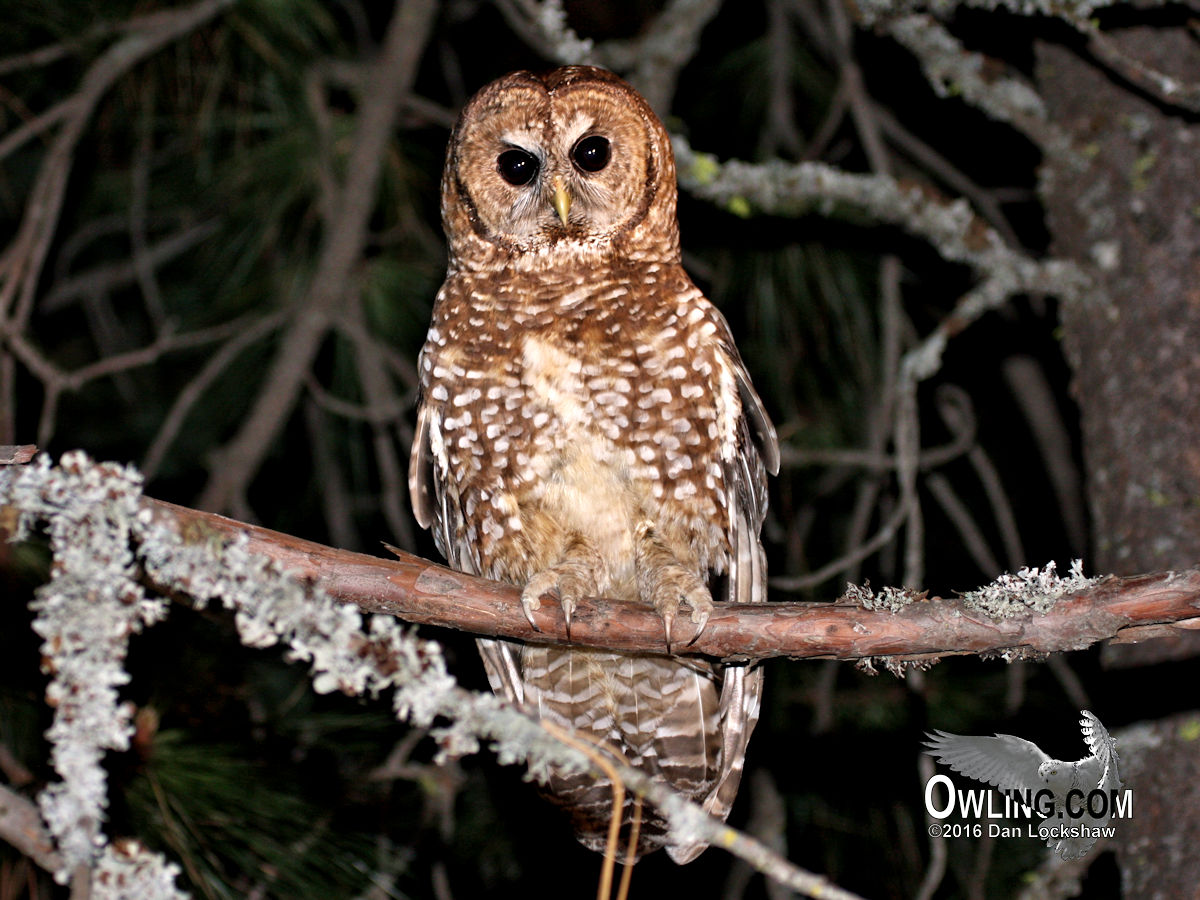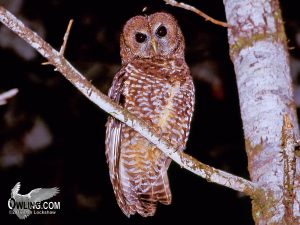Spotted Owl Biology
A Reference for North and Central American Owls
Name: Spotted Owl – Strix occidentalis
Other Common Names: Arizona Spotted Owl (lucida); Mexican Spotted Owl (lucida); California Spotted Owl (occidentalis); Northern Spotted Owl (caurina); Western Barred Owl; Wood Owl.
Subspecies: All three races of the Spotted Owl are found in the United States, one of which has a range that stretches into Canada and one into Mexico.
S.o. caurina is the northern most race and faces some of the greatest danger of deforestation. It ranges along the West Coast from SW British Columbia to San Francisco in the coastal ranges.
S.o. occidentalis is found both along the west slope of the Sierras in California and in the coastal ranges from San Francisco to San Diego.
S.o. lucida ranges from S. Utah south through Arizona, New Mexico, and W. Texas down into Central Mexico.
Measurements and Weights:
Wingspan: 40 – 50 in.
Length: 16.5 – 19 in.
Tail: 8 1/4 – 9 in.
Average Weight: Male: 21 oz.
Average Weight: Female: 23 oz.
Description: A medium size owl lacking ear tufts. Male and female are identical in plumage. Head and upper parts brown irregularly spotted with white. Under parts buff with brown and white ovals or barring. Lacks the vertical chest and flank streaking of its close relative, the similar Barred Owl. The Spotted Owl is also slightly smaller and darker than the Barred Owl. It has a large rounded facial disc that is pale brown with indistinct concentric rings of darker brown encircling the eyes. The facial rim or border is dark brown; lacks ear tufts; the bill is yellowish-green to straw colored; iris dark brown; claws blackish-brown; feet feathered. The Spotted Owl call is a very bold sound in the forest that often betrays its location. Although mostly nocturnal, it will often call at dusk or on a dark day.
Young: Initially pure white. The juveniles are a buffy-brown with brown barring and some white spotting on the back. The head is mostly buffy-brown. The white crown spotting and bolder over all colors develop as the owlet matures.




